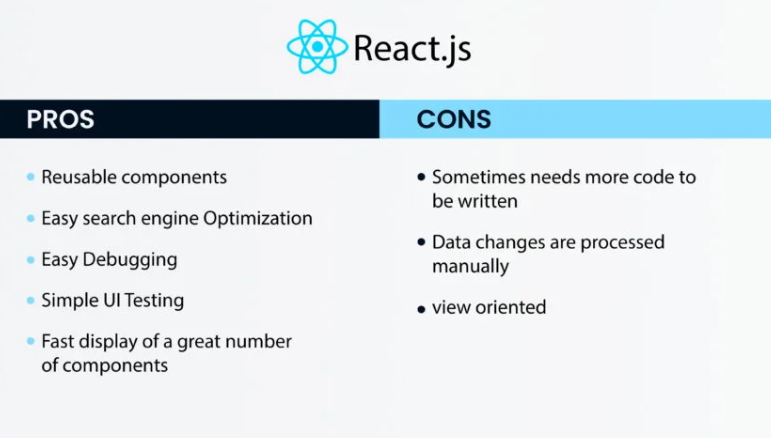Are you ready to stay ahead of the curve in JavaScript development in 2024? The right frameworks can make or break your career as a developer. With the tech landscape evolving rapidly, knowing which frameworks to focus on is crucial. In this post, we’ll unveil the top 5 JavaScript frameworks that are set to dominate in 2024. Let’s dive in!
React: The Reigning Champion
React continues to lead the pack as the most popular JavaScript library (technically a library, but often treated as a framework). Why?
Key Features
- Performance: React’s virtual DOM allows for efficient updates and rendering, making it a top choice for high-performance applications.
- Community Support: With a massive community backing it, finding resources, libraries, and support is easier than ever.
- Evolving Ecosystem: Key updates in 2024 include improved server-side rendering capabilities and enhanced features for concurrent rendering.
Recent Updates
In 2024, React has introduced new features like automatic batching and React Server Components, enhancing both performance and user experience.
Pros and Cons
- Pros: Massive community support, rich ecosystem of libraries, and a strong focus on performance.
- Cons: Steeper learning curve for beginners due to its JSX syntax.
For developers looking to build dynamic user interfaces, React remains the go-to choice. Check out React’s official documentation for more insights.

Vue.js: Lightweight Yet Powerful
Next up is Vue.js, a framework that’s lightweight yet increasingly popular among developers.
Key Features
- Ease of Integration: Vue can be easily integrated into projects, making it perfect for both new and experienced developers.
- Flexibility: Its progressive nature allows developers to adopt it incrementally, focusing on what they need.
- Growing Adoption: Reports indicate that Vue’s usage has surged, especially in smaller projects and startups.
Recent Updates
Vue 3 introduced the Composition API, allowing developers to write more organized and reusable code.
Pros and Cons
- Pros: Easy integration into existing projects, excellent documentation, and a growing community.
- Cons: Smaller ecosystem compared to React, which may limit available resources.
If you’re looking for a framework that balances simplicity with power, Vue.js is worth exploring. For a deeper dive into its growing adoption rates, check out this article on Vue’s impact.
Angular: Enterprise-Grade Framework
Angular is a robust choice for enterprise-level applications in 2024.
Key Features
- Robust Tooling: Its strong tooling and dependency injection make it ideal for large-scale applications.
- SEO Capabilities: Angular offers excellent SEO features out of the box, making it suitable for public-facing applications.
- Learning Curve: While its complexity can be daunting for beginners, mastering Angular pays off in building scalable applications.
Recent Updates
Angular 15 focuses on improved performance metrics and enhanced developer experience through better tooling.
Pros and Cons
- Pros: Strong structure for large applications, extensive community support, and powerful features.
- Cons: Higher learning curve compared to other frameworks; can feel overwhelming for newcomers.
For those interested in diving deeper into Angular’s capabilities, visit the Angular CLI tools guide.
Svelte: The New Kid on the Block
Svelte is gaining traction with its unique approach—no virtual DOM required!
Key Features
- Performance Gains: By compiling components at build time, Svelte produces highly optimized JavaScript code that leads to faster load times.
- Intuitive Syntax: Developers love Svelte for its clean syntax and reactivity without boilerplate code.
- Challenging the Giants: As more developers discover Svelte’s benefits, it poses a serious challenge to established frameworks like React and Vue.
- Recent Updates
- SvelteKit has become a popular choice for building full-stack applications with ease.
- Pros and Cons
- Pros: Faster performance due to compile-time optimization; minimal boilerplate code.
- Cons: Smaller community compared to giants like React or Angular; fewer resources available.
Discover more about Svelte in this comprehensive overview.
Curious about how Svelte stacks up against others? Check out this performance comparison chart illustrating its advantages over traditional frameworks.
Next.js: The Full-Stack Favorite
Finally, let’s talk about Next.js—a framework that’s skyrocketing in popularity for server-side rendering and static site generation.
Key Features
- Server-Side Rendering (SSR): This improves SEO by rendering pages on the server rather than in the browser.
- Static Site Generation (SSG): Combine static generation with dynamic capabilities for optimal performance.
- SEO-Friendly: Next.js excels at creating fast, SEO-friendly applications thanks to its server-side rendering capabilities.
- Full-Stack Capabilities: With built-in API routes, you can easily create full-stack applications without needing additional backend frameworks.
- Rapid Development: Its automatic page generation based on file structure simplifies development workflows significantly.
Recent Updates
Next.js 13 introduced new features like image optimization and enhanced routing capabilities.
Pros and Cons
- Pros: Excellent for SEO, easy deployment options, and a growing ecosystem.
- Cons: Can be complex for simple projects; may require additional configuration for optimal performance.
For tutorials and resources on building with Next.js, visit Next.js tutorials.Next.js Project Example
Which framework will you focus on in 2024? Share your thoughts in the comments below! If you found this post helpful, please share it with your developer community and subscribe for more insights into the world of JavaScript frameworks.












